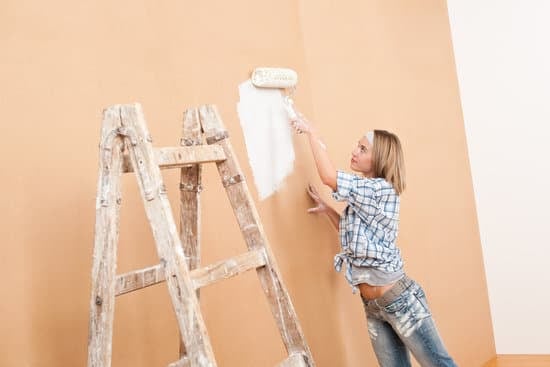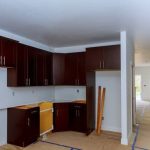In the ever-expanding world of media and content creation, voice over work has become increasingly popular. Whether it’s narrating audiobooks, lending your voice to animated characters, or recording podcasts, having a high-quality home studio is essential for aspiring voice over artists looking to make their mark in the industry. But how do you improve your home studio and ensure that you deliver stellar voice overs every time?
Setting up a professional-grade home studio is more accessible than ever before, thanks to advancements in technology and affordability of equipment. With just a few key principles in mind, you can optimize your recording environment, select the right equipment, fine-tune acoustics, and polish your recordings to perfection. In this article, we will guide you through each step, providing expert advice and practical tips to help you elevate your voice over journey to new heights.
Whether you’re just starting out or looking to upgrade an existing setup, improving your home studio is crucial for achieving professional-grade audio quality. By paying close attention to every aspect of your recording environment and investing in the right tools and techniques outlined in this article, you’ll be well on your way to creating stellar voice overs that captivate audiences and leave a lasting impression.
So let’s dive in and explore the strategies for enhancing your home studio space.
Assessing the Space
When it comes to setting up a home studio for voice overs, one of the most important factors to consider is the recording environment. The space in which you record can greatly impact the quality of your recordings, so it is crucial to optimize your recording environment for optimal sound. In this section, we will explore the key factors to consider when selecting the ideal location for your home studio and provide tips for soundproofing and minimizing external noise interference.
Selecting the Ideal Location
The first step in optimizing your recording environment is choosing the right location for your home studio. Ideally, you’ll want a space that is separate from other rooms in your house and free from outside distractions. A spare bedroom or a corner of a quiet room can work well as long as you are able to control ambient noise.
Consider the acoustics of the space as well. Rooms with high ceilings and hard surfaces can create unwanted echoes and reverberation in your recordings. Look for spaces with carpeting or add rugs to help absorb some of the sound reflections.
Soundproofing and Noise Reduction
Once you have selected a suitable location, it’s time to address any potential sources of external noise interference. Soundproofing your home studio can help eliminate unwanted sounds from entering your recordings.
Start by sealing any gaps or cracks around windows and doors with weatherstripping or acoustic caulk. This will prevent sound leakage from both inside and outside of your studio.
Consider investing in soundproof curtains or acoustic panels to absorb sound reflections and reduce reverberation within the room. You can also place bookshelves or acoustic foam on the walls to further enhance sound absorption.
In addition to soundproofing measures, it may be necessary to schedule recording sessions during times when there is less external noise, such as early mornings or late at night when traffic noise is reduced.
By carefully assessing the space and taking steps to optimize your recording environment, you can drastically improve the quality of your voice overs. Remember to choose a location that is separate from distractions, consider the acoustics of the space, and take measures to soundproof and minimize external noise interference. With a well-optimized recording environment, you will be well on your way to producing stellar voice overs.
Essential Recording Equipment
Building a solid foundation for your home studio starts with having the essential recording equipment. The right equipment will ensure that you capture high-quality voice overs and create professional-sounding recordings. Here are some must-have pieces of equipment to consider:
Microphone
- A good microphone is the cornerstone of any home studio. Look for a microphone specifically designed for voice overs to achieve clear and crisp audio. Consider options such as condenser microphones, which are highly sensitive and capture a wide range of frequencies.
- Recommended budget-friendly choices include the Audio-Technica AT2020 or the Blue Yeti USB microphone. These offer great sound quality without breaking the bank.
Headphones
- Investing in a pair of quality headphones is crucial for monitoring your recordings accurately. Closed-back headphones are recommended because they provide good isolation from external noise and prevent audio leakage into the microphone.
- Some popular options for home studios include the Audio-Technica ATH-M50x or the Sennheiser HD 280 Pro headphones. These models offer excellent sound reproduction and comfort during long recording sessions.
Audio Interface
- An audio interface acts as the bridge between your microphone and computer, providing high-quality analog-to-digital conversion. Look for an interface with low latency, multiple inputs/outputs, and high-resolution audio capabilities.
- For those on a budget, consider options like the Focusrite Scarlett 2i2 or the PreSonus AudioBox USB audio interfaces. These deliver reliable performance at an affordable price point.
Having these essential recording equipment pieces will set you up for success in your home studio endeavours. Take the time to research different models, read reviews, and find what suits your needs and budget best before making a purchase decision.
In addition to these foundational items, don’t forget to invest in other accessories such as mic stands, pop filters, and shock mounts to further optimize your recording setup.
Fine-tuning Acoustics
When it comes to voice over work, achieving crystal clear sound is essential for professional and high-quality recordings. One of the key factors that greatly influence the sound quality in your home studio is the acoustics of the room. Understanding the basics of room acoustics and implementing techniques to improve it can make a significant difference in the overall clarity and tone of your voice recordings.
Understanding Room Acoustics
To optimize your home studio acoustics, it’s important to understand how different aspects of a room affect sound. The three main components that impact room acoustics are diffusion, absorption, and bass traps.
Diffusion is responsible for spreading sound waves evenly throughout the space, reducing echoes or standing waves. This can be achieved by using diffusers on walls or ceilings, which scatter sound in different directions.
Absorption helps control unwanted reflections and reverberation in the room. Adding absorptive materials such as foam panels or acoustic panels on walls, ceiling, or floor can effectively absorb excess sound energy.
Bass traps are specifically designed to target low-frequency sounds that tend to build up in corners. Placing bass traps in these areas helps minimize any excessive bass resonance and creates a more balanced sound environment.
Improving Acoustics with Diffusion, Absorption, and Bass Traps
There are several ways you can fine-tune your home studio acoustics using techniques like diffusion, absorption, and bass traps:
- Position diffusers strategically around the room to evenly distribute sound waves and reduce unwanted echoes.
- Use acoustic panels or foam panels on walls, ceiling, and floor to absorb excess sound energy.
- Place bass traps in corners where low-frequency sounds typically build up to minimize any boomy or unbalanced bass response.
- Experiment with different placements of diffusers, absorbers, and bass traps to achieve the optimal sound balance for your voice recordings.
By implementing these techniques, you can create a well-balanced and acoustically treated environment for your voice over recordings. This will result in cleaner and more professional-sounding recordings, elevating the overall quality of your work.
Remember, achieving crystal clear sound is an ongoing process, and it may take some trial and error to find the perfect acoustic setup for your home studio. Continuously experimenting, fine-tuning, and seeking feedback from colleagues or industry professionals will ultimately lead to the best possible results.
Optimizing Your Recording Space
When it comes to creating a high-quality home studio for voice overs, optimizing your recording space is key. The layout and ergonomics of your studio can greatly impact the efficiency and comfort of your voice over sessions. In this section, we will explore the importance of a well-organized and comfortable workspace, as well as provide tips on arranging equipment, managing cables, and creating a conducive environment.
Firstly, it is essential to have a well-organized workspace that allows you to easily access all your equipment. Consider investing in a sturdy desk or workstation specifically designed for audio production. This will help keep your equipment organized and within reach, minimizing distractions during your recording sessions. Additionally, having proper storage solutions such as shelves or drawers can help keep cables, accessories, and other essentials neatly organized.
Proper cable management is also crucial for maintaining an efficient recording space. Messy cables not only look unprofessional but can also create interference or even present tripping hazards. To tame the cable chaos, consider using cable clips or wraps to secure them and keep them out of the way. Labeling your cables can also save you time and frustration when troubleshooting or making adjustments.
Creating a comfortable environment in your home studio is equally important for long recording sessions. Invest in a supportive chair that provides adequate back support and allows for adjusting height and tilt. This will prevent discomfort and potential health issues resulting from improper posture during extended periods of sitting.
Mastering Mic Technique
When it comes to achieving professional-quality voice overs, mastering microphone technique is crucial. The way you position and handle your microphone can greatly impact the sound quality of your recordings. Here are some tips to help you get the best sound possible:
- Maintain consistent distance: To achieve a consistent and balanced sound, it’s important to maintain a consistent distance from the microphone. This will prevent any sudden changes in volume or tone. Experiment with different distances to find the sweet spot that works best for your voice.
- Handle plosives effectively: Plosives are those unwanted popping sounds that occur when certain consonant sounds, like “p” or “b,” are pronounced forcefully into the microphone. To minimize plosives, consider using a pop filter or foam windscreen. These accessories effectively diffuse the air and soften the impact of these sounds.
- Reduce sibilance: Sibilance refers to excessive hissing or “s” sounds that can be distracting in voice over recordings. One way to reduce sibilance is by adjusting the angle of your mouth in relation to the microphone. Aim for more of an off-axis position instead of speaking directly into the mic.
- Positioning matters: The position of your microphone can significantly affect the overall sound quality. Optimal positioning typically involves placing the microphone slightly above or below your mouth, angled towards you at around 45 degrees, depending on your specific setup and vocal characteristics.
- Monitor and adjust levels: It’s important to constantly monitor and adjust your microphone levels during recording sessions. Peak levels that are too high can result in distortion, while levels that are too low can lead to a poor signal-to-noise ratio. Make use of monitoring tools provided by your audio interface or digital audio workstation (DAW) to ensure optimal levels.
By mastering these microphone techniques, you can significantly improve the sound quality of your voice over recordings. Experiment with different approaches and find the methods that work best for your specific voice and setup. With practice and attention to detail, you can achieve the best sound possible in your home studio.
Remember, the quality of your microphone technique is just one piece of the puzzle. Other factors such as room acoustics, equipment choice, and post-processing techniques also play a significant role in achieving stellar voice overs. Continually honing your skills and seeking knowledge in all areas of voice over production will help you elevate your craft to new heights.
Audio Editing and Post-Processing
In the world of voice over work, a high-quality recording is essential to stand out from the competition. One of the key steps in achieving this professional sound is through audio editing and post-processing. This process allows you to enhance the quality of your recordings, remove any unwanted noise or imperfections, and add effects to make your voiceovers truly shine.
To begin with, it’s important to have the right audio editing software. There are many options available on the market, each with their own unique features and capabilities. Some popular choices for voice over post-production include Adobe Audition, Pro Tools, and Audacity, which is a free software that can be a great starting point for beginners. These programs offer tools for equalization (EQ), noise reduction, compression, and adding effects such as reverb or echo.
Once you have selected the appropriate software for your needs, it’s time to dive into the editing process. One of the first steps is EQing your recordings. EQ allows you to adjust the frequency balance in your voice overs by boosting or cutting specific frequencies. This helps to create a more balanced and natural sound.
In addition, noise reduction techniques should be employed to eliminate any background noise that may have been captured during recording. This can include fan noise, traffic sounds, or electrical hums. Noise reduction tools within your audio editing software allow you to isolate and reduce or remove these unwanted sounds while preserving the clarity of your voice.
Compression is another crucial tool in audio post-processing for voice overs. It helps to even out the dynamic range of your recordings by reducing loud peaks and boosting softer sections. This creates a more consistent volume level throughout your performance.
Finally, adding effects can further enhance your recordings and give them a professional touch. Reverb can help simulate different acoustic spaces or add depth to your voice overs. Delays can create an echo effect, adding drama or impact to your performance. Experiment with different effects to find the ones that best complement your voice and the style of the project you are working on.
By mastering the art of audio editing and post-processing, you can take your voice overs to the next level and deliver truly polished and professional recordings. Don’t be afraid to experiment with different techniques and effects as you refine your skills in this important aspect of the industry.
| Audio Editing Software | Features |
|---|---|
| Adobe Audition | – Powerful EQ, noise reduction, compression tools
|
| Pro Tools | – Industry-standard software used in professional studios
|
| Audacity | – Free and open-source software
|
Creating Professional Voice Over Demos
When it comes to getting hired for voice over work, having a professional and captivating demo is essential. A voice over demo is like a portfolio that showcases your skills, versatility, and range as a voice actor. It allows potential clients and employers to get a glimpse of your talent and decide whether you are the right fit for their project.
Scripting Your Demo
The first step in creating a professional voice over demo is to carefully select the scripts that will best represent your abilities. Choose scripts that showcase different styles, genres, and characters to demonstrate your versatility. Consider the type of projects you wish to work on and tailor your script selection accordingly. For example, if you aspire to do commercial voice overs, include scripts that highlight your ability to deliver persuasive and engaging performances for products or services.
It’s also important to keep your demo concise and attention-grabbing. Aim for a duration of around one minute or less for each script. Remember that clients often receive numerous demos, so it’s crucial to make a strong impression within the limited time frame.
Recording and Editing
Once you have selected your scripts, it’s time to record them in your home studio. Ensure that you use high-quality equipment so that the sound quality of your demo reflects professionalism. Follow proper microphone technique guidelines discussed earlier in this article to capture clear and crisp audio.
After recording your scripts, take some time to edit the recordings professionally. Trim out any mistakes or unnecessary pauses, adjust the volume levels, and add any necessary effects or music that can enhance the overall presentation of your demo. Remember that clean editing plays a significant role in creating a polished final product.
In addition to basic editing techniques, consider using EQ (equalization) and compression during post-production processing to optimize the sound quality of your recordings. Experiment with different settings until you achieve a balanced and professional sound that highlights your unique vocal qualities.
Putting It All Together
Once you have recorded and edited all the scripts for your demo, it’s time to assemble them into a final compilation. Pay attention to the order in which you present each script, as it can help create a smooth and engaging flow throughout the demo. Consider starting with your strongest script to immediately grab the listener’s attention.
When compiling your demo, ensure there is enough variety in terms of tone, style, and delivery. Demonstrate your ability to adapt to different projects and showcase different sides of your voice acting skills. Aim for a total duration of around one to two minutes, as this is typically the ideal length for voice over demos.
Finally, export your compiled demo as an audio file in a commonly used format such as MP3 or WAV. Make sure the file is easily shareable and can be easily uploaded or sent via email or online platforms.
Creating a professional voice over demo takes time and effort, but it is crucial in showcasing your talent and capabilities to potential clients. Remember that your demo should always accurately represent who you are as a voice actor and leave a lasting impression on those who listen to it.
| Tips for Creating Professional Voice Over Demos: |
|---|
| 1. Select scripts that showcase different styles, genres, and characters. |
| 2. Keep the demos concise (around one minute per script) to make a strong impression. |
| 3. Use high-quality recording equipment and follow proper microphone technique. |
| 4. Edit professionally by trimming mistakes, adjusting volume levels, and adding necessary effects or music. |
| 5. Experiment with EQ and compression to optimize the sound quality of your recordings. |
| 6. Pay attention to the flow and order when compiling the scripts into a final demo. |
Constantly Improving
The voice over industry is a rapidly evolving field with new trends and technologies emerging constantly. To stay competitive and continue to impress clients, it is crucial for voice over artists to constantly improve their skills and stay updated with industry trends. By continuously learning and upskilling, voice over artists can ensure that they are offering the best possible service to their clients.
One way to stay ahead in the industry is by actively seeking out online resources, courses, and communities that cater specifically to voice over artists. There are numerous websites and online platforms that offer valuable resources such as tutorials, videos, and forums where artists can learn from experienced professionals and exchange insights with peers. These online communities also provide opportunities for networking and collaboration, which can lead to new projects and opportunities.
In addition to online resources, attending workshops, conferences, or seminars related to voice over work can also be beneficial. These events often include presentations by industry experts who share their knowledge and experience on various topics such as vocal technique, performance skills, marketing strategies, and industry trends. Participating in such events not only provides valuable insights but also allows voice over artists to connect with others in the industry and build professional relationships.
By actively seeking continuous improvement through both online resources and real-world events, aspiring voice over artists can stay ahead in the rapidly evolving industry. In an environment where technology plays a critical role in shaping the field, it is essential for voice over artists to embrace new techniques, tools, and platforms. By staying updated with current trends and continuously improving their skills, voice over artists can ensure long-term success in this dynamic industry.
Conclusion
In conclusion, improving your home studio for voice overs is essential in order to elevate your voice over journey to new heights. By optimizing your recording environment, investing in essential recording equipment, fine-tuning acoustics, optimizing the layout and ergonomics of your space, mastering mic technique, perfecting audio editing and post-processing, creating professional voice over demos, and staying ahead in the rapidly evolving industry, you can enhance the quality of your voice overs and increase your chances of success.
Setting the stage for stellar voice overs starts with assessing the space and selecting the ideal location for your home studio. By soundproofing and minimizing external noise interference, you can ensure that your recordings are clean and professional.
Additionally, having must-have equipment such as a high-quality microphone, headphones, and audio interface is crucial for building a solid foundation for your home studio setup. Comparing different options and exploring budget-friendly choices will help you make informed decisions when it comes to purchasing equipment.
Improving room acoustics using diffusion, absorption, and bass traps is another important step in achieving crystal clear sound. Creating a well-organized and comfortable workspace will not only enhance efficiency during voice over sessions but also contribute to a conducive environment for creativity. Mastering mic technique by maintaining consistent distance from the microphone, handling plosives effectively, and reducing sibilance will further improve the sound quality of your recordings.
Once you have recorded your voice overs, polishing them to perfection through audio editing and post-processing is crucial. Learning popular audio editing software tools and their key features will enable you to enhance your recordings through EQ settings, noise reduction techniques, compression adjustments, and adding effects as necessary.
Creating professional voice over demos that showcase your talent is essential in getting hired in this competitive industry. Scripting compelling content that highlights your skills followed by recording and editing with precision will make a lasting impression on potential clients.
Lastly, constantly improving by staying updated with industry trends and upskilling is vital for long-term success. There are numerous online resources, courses, and communities available for aspiring voice over artists to continue learning and growing in their craft. By continuously expanding your knowledge and honing your skills, you will be well-equipped to navigate the rapidly evolving industry.
Frequently Asked Questions
What do I need to set up a home voice over studio?
To set up a home voice over studio, you will need a few key essentials. First and foremost, you will need a microphone that is suitable for recording voice overs. It is recommended to invest in a good quality condenser microphone for capturing clear and professional sound.
Additionally, you will need a computer or laptop with audio recording software installed, such as Audacity or Adobe Audition. A sound interface or audio mixer is also necessary to connect the microphone to your computer for recording purposes. Acoustic treatment is another important aspect of setting up a home studio – this includes using foam panels or bass traps to reduce echoes and unwanted noise reflections within the room.
How can I make my voice over better quality?
Improving the quality of your voice over recordings involves several aspects. Firstly, it is crucial to work on your vocal technique and delivery by practicing regularly and seeking professional voice coaching if necessary. Proper breathing techniques, articulation, and tone control can greatly enhance the overall quality of your voice overs.
Secondly, using proper microphone technique is vital – position yourself at an appropriate distance from the microphone to avoid distortion or plosive sounds while maintaining consistent levels throughout the recording. Lastly, ensure you are in a properly treated acoustic environment to minimize background noise and reverberation that could interfere with the clarity of your voice.
How do you soundproof a room for voice over?
Soundproofing a room for voice over requires careful consideration of several factors. The primary goal is to reduce external noise and create an acoustically controlled environment for recording purposes. Start by sealing any gaps or cracks in doors, windows, or walls through which sound may leak into the room. You can use weatherstripping tape or caulk for this purpose.
Adding mass to the walls by using soundproof curtains or acoustic panels can help absorb and dampen sound reflections within the room. If necessary, you can also consider constructing additional layers of drywall with Green Glue compound between them for improved sound isolation. Finally, be mindful of other noise sources such as air conditioning units or computer fans, and ensure they are either turned off or placed at a sufficient distance from the recording area to prevent unwanted noise interference.

I’m thrilled to have you here as a part of the Remodeling Top community. This is where my journey as an architect and remodeling enthusiast intersects with your passion for transforming houses into dream homes.





